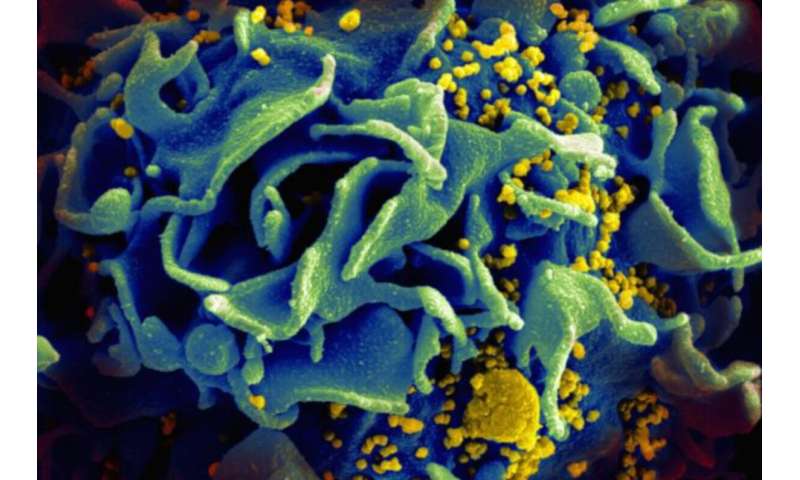Research leads to simplified dosage of HIV medicine for children

Children living with HIV can now benefit from an adapted, simpler combination therapy. In combination therapy, two or three medicines are used simultaneously to inhibit HIV. One of those agents is dolutegravir. Thanks to research at Radboud University Medical Center, it is now clear that the use of one, widely available, pill of dolutegravir in children yields equally good treatment results as a combination of several, less readily available pills of that drug. Especially in countries where the number of infections is high and good care is less accessible, this makes it easier to treat children. These results, published today in the scientific journal The Lancet HIV, are included in the World Health Organization (WHO) treatment guidelines.
1.7 million children live with HIV
Approximately 1.7 million children worldwide are infected with HIV (the human immunodeficiency virus, which can cause AIDS), 1.2 million of whom live south of the Sahara. These children need lifelong medication to inhibit the virus, in order to prevent disease, death and infection from others. However, it is estimated that in 2018, only 56% of HIV-infected children had access to proper medication. In addition, the effect in children and teenagers is less desirable than in adults.
It was already known that the drug dolutegravir, in combination with other drugs, is a good treatment for all HIV-infected adults, because it effectively inhibits virus growth and the virus doesn’t quickly develop resistance. Moreover, it is a safe and cheap tool, and widely available from high- to low-income countries, an important starting point for WHO to equate healthcare in different countries.
Lack of access to good treatment
It is also known that treatment options for children often lag behind those for adults. In the case of HIV-inhibiting treatments, children over 12 years of age and 40 kg received the same dose of dolutegravir as adults (one 50 mg pill daily). But younger children, or those of a lower weight, had to take two or more pills a day, but of a lower amount (10mg and 25mg), a dosage not approved by all drug agencies.
Professor David Burger says, “This led to problems, because these lower dosages are not easily available in low and middle-income countries. As a result, national programs could not be started properly and the risk of errors in dosage and intake increased. In addition, this medication was not appropriate for small children under 20 kilos. In short, there was a need to achieve a simpler and more practical dosage of dolutegravir for children.”
Simpler dosage leads to good results
The study initiated by Burger, together with Radboud UMC colleagues Pauline Bollen and Angela Colbers and colleagues from the Medical Research Council Clinical Trials Unit at University College London, focused on simplifying the dosage of dolutegravir that children should take every day, which should work equally well and should not cause any additional side effects. They did this by giving 62 HIV-positive children aged between 6 and 18 years from Uganda and Zimbabwe different doses of medicines, taking their weight into account. They were monitored for nearly half a year. The results show that one 50 mg pill of dolutegravir per day, the same dose as adults, works well in the children and that their body responds to the medicine in the same way as the more difficult dose to give.
Source: Read Full Article


